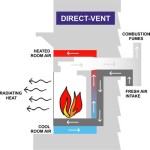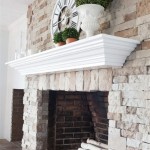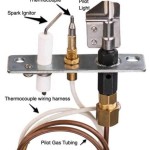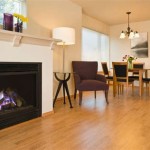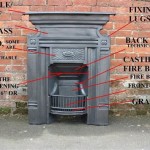Low Energy Electric Fireplaces: A Comprehensive Guide
Electric fireplaces have become increasingly popular as a supplementary heating source and aesthetic enhancement for homes and apartments. Among the diverse range of electric fireplaces available, low-energy models are particularly attractive due to their potential to reduce energy consumption and lower electricity bills. This article provides a detailed examination of low-energy electric fireplaces, exploring their features, benefits, and operational principles.
Traditional fireplaces, while visually appealing and providing a sense of warmth, are often inefficient. A significant portion of the heat generated escapes through the chimney, contributing to energy waste. Electric fireplaces, in contrast, offer a more controlled and energy-efficient heating solution. Low-energy models further enhance this efficiency by incorporating advanced technologies and design features aimed at minimizing power usage without sacrificing heating performance.
Before delving into the specifics of low-energy electric fireplaces, it is important to understand the basic principles of electric fireplace operation. These appliances typically utilize electric heating elements to generate heat, which is then circulated into the room by a fan. Many models also include a visual display simulating a realistic flame effect, further enhancing the ambiance of the space. The amount of energy consumed by an electric fireplace depends on several factors, including the heating element's wattage, the fan speed, and the duration of operation.
Key Point 1: Defining Low Energy Electric Fireplaces
Defining what constitutes a "low energy" electric fireplace requires a nuanced approach. There is no universally agreed-upon standard for energy efficiency in this category. However, low-energy electric fireplaces generally share certain characteristics that contribute to reduced power consumption. These characteristics include:
Efficient Heating Elements: Low-energy models often incorporate advanced heating elements, such as infrared quartz or ceramic heating elements, which are known for their efficiency in converting electrical energy into heat. Infrared quartz heaters, for example, directly heat objects and people in the room rather than heating the air, resulting in a more focused and efficient heating experience. Ceramic heaters are also efficient due to their ability to retain heat for a longer period, allowing for more consistent and energy-saving operation.
Adjustable Thermostat Settings: Precision temperature control is crucial for energy conservation. Low-energy electric fireplaces are typically equipped with adjustable thermostats that allow users to set the desired room temperature accurately. This prevents the fireplace from overheating the space and wasting energy. Programmable thermostats take this a step further by enabling users to schedule heating cycles based on their daily routines, ensuring that the fireplace only operates when needed.
Dimming Flame Effects: While the flame effect is primarily aesthetic, it can still contribute to energy consumption, albeit minimally. Low-energy models often feature dimmable flame effects, allowing users to reduce the brightness of the flames and conserve energy when the heating function is not the primary focus. Some models also utilize LED technology for the flame effect, which is significantly more energy-efficient than traditional incandescent bulbs.
Zoned Heating Capabilities: Certain low-energy electric fireplaces offer zoned heating capabilities, allowing users to direct heat to specific areas of the room. This feature is particularly useful for larger rooms where it is not necessary to heat the entire space. By focusing the heat on the occupied areas, users can reduce overall energy consumption.
Energy-Saving Modes: Many manufacturers incorporate dedicated energy-saving modes into their low-energy electric fireplaces. These modes typically optimize the fireplace's operation for maximum efficiency by limiting the heating wattage and adjusting the fan speed. Some models even include a sleep timer function that automatically turns off the fireplace after a pre-set period, preventing unnecessary energy usage.
Key Point 2: Benefits of Using Low Energy Electric Fireplaces
Adopting a low-energy electric fireplace offers a multitude of advantages, both in terms of cost savings and environmental impact. These benefits include:
Reduced Energy Consumption: The primary benefit of low-energy electric fireplaces is their ability to reduce energy consumption compared to traditional electric fireplaces or other heating sources. By incorporating efficient heating elements, adjustable thermostat settings, and energy-saving modes, these appliances minimize power usage and lower electricity bills.
Lower Electricity Bills: The reduced energy consumption translates directly into lower electricity bills. Over time, the savings can be significant, especially during the colder months when heating demands are higher. The exact amount of savings will vary depending on factors such as the fireplace's wattage, the heating settings used, and the local electricity rates.
Environmental Friendliness: By reducing energy consumption, low-energy electric fireplaces contribute to a smaller carbon footprint. Generating electricity often involves burning fossil fuels, which releases greenhouse gases into the atmosphere. By using less electricity, these fireplaces help reduce the demand for fossil fuels and promote a more sustainable energy future.
Supplemental Heating: Electric fireplaces are ideal for supplemental heating, allowing users to warm specific rooms or areas without having to heat the entire house. This can be particularly beneficial in homes with central heating systems, as it allows users to lower the thermostat setting for the central heating and use the electric fireplace to provide localized warmth.
Ease of Installation: Electric fireplaces are typically easy to install, requiring no venting or gas lines. Most models simply plug into a standard electrical outlet, making them a convenient and hassle-free heating solution. This eliminates the need for expensive and complex installation procedures, making them a suitable option for both homeowners and renters.
Safety: Electric fireplaces are generally safer than traditional wood-burning fireplaces or gas fireplaces. They do not produce open flames, smoke, or carbon monoxide, reducing the risk of fire hazards and respiratory problems. Many models also include safety features such as overheat protection, which automatically shuts off the fireplace if it becomes too hot.
Aesthetic Appeal: Electric fireplaces offer a visually appealing alternative to traditional heating sources. They come in a wide variety of styles and designs, ranging from traditional mantel fireplaces to modern wall-mounted units. The realistic flame effect creates a cozy and inviting atmosphere, enhancing the ambiance of any room.
Key Point 3: Factors to Consider When Choosing a Low Energy Electric Fireplace
Selecting the right low-energy electric fireplace requires careful consideration of several factors. These factors include:
Heating Capacity: The heating capacity of the fireplace should be appropriate for the size of the room it will be heating. This is typically measured in British Thermal Units (BTUs). A higher BTU rating indicates a greater heating capacity. It is important to choose a fireplace with a BTU rating that is sufficient to heat the desired space without being excessively powerful, as this can lead to energy waste.
Energy Efficiency Rating: Look for electric fireplaces with a high energy efficiency rating. This rating indicates the percentage of electrical energy that is converted into heat. Models with higher energy efficiency ratings will consume less energy and save you money on your electricity bills. The Energy Star label is a reliable indicator of energy efficiency.
Type of Heating Element: As previously mentioned, different types of heating elements offer varying levels of efficiency. Infrared quartz and ceramic heating elements are generally considered to be more energy-efficient than traditional resistance heating elements.
Thermostat Features: Choose a fireplace with a thermostat that offers precise temperature control and programmable settings. This will allow you to optimize the fireplace's operation for maximum energy efficiency.
Flame Effect Technology: While the flame effect is primarily aesthetic, it is important to consider the type of technology used. LED flame effects are significantly more energy-efficient than traditional incandescent bulbs.
Size and Style: Consider the size and style of the fireplace to ensure that it complements the décor of your home. Electric fireplaces come in a wide variety of sizes and styles, ranging from traditional mantel fireplaces to modern wall-mounted units.
Safety Features: Look for fireplaces that include safety features such as overheat protection and a cool-touch exterior. This will help prevent accidents and ensure the safe operation of the fireplace.
Warranty: Choose a fireplace with a good warranty to protect your investment. A warranty will cover any defects in materials or workmanship that may occur during the warranty period.
Price: Compare prices from different retailers to find the best deal. Keep in mind that the cheapest option is not always the best, as it may compromise on quality or energy efficiency.
In summary, low-energy electric fireplaces offer a compelling combination of energy efficiency, cost savings, environmental friendliness, and aesthetic appeal. By understanding the key features and benefits of these appliances, consumers can make informed decisions and choose a model that meets their specific heating needs and preferences. The factors outlined above will help guide the selection process towards a low-energy electric fireplace that provides both warmth and peace of mind.

Are Electric Fireplaces Energy Efficient We Love Fire

How Energy Efficient Is An Electric Fireplace

Are Electric Fireplaces Energy Efficient Direct Learning Center

Energy Efficiency Benefits Of Purchasing An Electric Fireplace Uintah Fireplaces

Mythbusters Electric Fires Dimplex

ᑕ❶ᑐ Energy Efficient Electric Fireplaces For Your Home

Are Electric Fireplaces Energy Efficient We Love Fire

Gas Or Electric Fireplace Buyers Guide Part 3 The Studio

Are Electric Fireplaces Energy Efficient We Love Fire

White Freestanding Electric Fireplace Suite With Realistic Log Effect Amberglo Agl029 Appliances Direct
Related Posts

